Video streaming mistakes are crucial to be avoided to improve your audience experience. Do you ever wonder why some Video-on-Demand streaming services flourish while others struggle to gain traction?
In the fast-paced world of online video streaming, it’s not just about having an extensive content library or the latest features. It’s about avoiding common pitfalls that can hinder your success and leave your audience looking elsewhere for their streaming fix.
As streaming businesses continue to vie for viewers’ attention, understanding these pitfalls and steering clear of them is the key to thriving in the highly competitive VOD landscape. In this exploration, we will delve into the nuances of VOD streaming and highlight some of the most prevalent mistakes that streaming businesses must avoid to ensure their sustained growth and viewer satisfaction.
So, let’s get started!
The Importance of Professional VOD Streaming
In today’s digital age, VOD streaming has become an integral part of our entertainment landscape. From movies and TV shows to educational content and live events, VOD services offer unparalleled convenience and flexibility for viewers.
However, the success of a VOD streaming platform doesn’t solely depend on its content library; it also hinges on the professionalism with which the service is delivered. Here, we explore the importance of professional VOD streaming and why it matters for both providers and viewers.
1. Quality of Experience
Professional VOD streaming prioritizes the quality of the viewer experience. This encompasses various factors, including video and audio quality, seamless playback, and minimal buffering. High-definition content, smooth transitions, and reliable streaming contribute to a positive viewer experience. In contrast, amateurish or poorly managed services can lead to frustration, abandonment, and ultimately, a loss of viewers.
2. Reliability and Availability
Professional VOD streaming ensures reliability and availability. Viewers expect their chosen content to be accessible whenever they want it, without downtime or technical glitches. Reliable streaming infrastructure, redundancy measures, and robust content delivery networks are essential components of professional streaming. Downtime and buffering issues can drive viewers away and tarnish a platform’s reputation.
3. Security and Privacy
Protecting viewers’ privacy and ensuring content security are paramount. Professional VOD streaming platforms implement robust security measures to safeguard user data and content from unauthorized access or piracy. Encryption, authentication, and secure protocols are vital components. Neglecting security can result in breaches, data theft, and legal issues.
4. Scalability and Growth
As a VOD platform grows, its infrastructure must scale to accommodate increasing demands. Professional streaming services are designed with scalability in mind, ensuring that they can handle surges in viewership without performance degradation. Failing to plan for scalability can lead to crashes and outages during peak usage.
5. Monetization Opportunities
Professional VOD platforms offer diverse monetization options, such as subscription models, pay-per-view, advertising, and more. These options enable content providers to generate revenue and sustain their operations. An amateur approach to monetization can result in missed revenue opportunities and an unsustainable business model.
6. Viewer Engagement
Professional VOD platforms prioritize viewer engagement through features like recommendations, user profiles, and interactive content. Engaged viewers are more likely to remain loyal and return for more content. Amateurish interfaces and a lack of engagement tools can result in viewers quickly losing interest.
Top Video Streaming Mistakes and How To Avoid them
1. Poor Video Quality
In the realm of VOD streaming, video quality is non-negotiable. It’s the linchpin that holds the viewer’s attention and keeps them coming back for more. Here’s a deeper dive into why poor video quality is a cardinal video streaming mistake in VOD streaming and how to avoid it:
- High-Quality Video Encoding: Video quality begins with encoding. The encoding process compresses video files, reducing their size for efficient streaming. However, if done inadequately, it can result in a loss of video quality. To avoid this, invest in advanced video encoding techniques that strike the right balance between compression and quality. Modern codecs like H.264 and H.265 offer exceptional compression without compromising visual fidelity.
- Adaptive Streaming: The internet’s speed is like a fluctuating river, and viewers’ devices come in various shapes and sizes. Adaptive streaming is the solution to bridge these gaps. It dynamically adjusts the video quality in real-time based on the viewer’s available bandwidth and device capabilities. This ensures that viewers with slower connections can still enjoy the content without the annoyance of buffering or pixelation, while those with faster connections get the best possible quality.
- Robust Content Delivery Networks: A Content Delivery Network is the highway that carries your content to viewers’ screens. Robust CDNs are essential for ensuring that your videos load quickly and stream seamlessly. They distribute your content across multiple servers strategically located worldwide, reducing the distance between the viewer and the content source. This not only speeds up content delivery but also alleviates server congestion during peak usage times.
- Resolution Matching: To maintain high video quality, it’s crucial to provide content in resolutions that match viewers’ devices and bandwidth. Offering videos in a variety of resolutions, from standard definition to full high definition and even 4K Ultra HD, ensures that viewers can select the quality that suits their setup. This flexibility prevents overloading viewers with high-resolution videos that their devices or connections can’t handle.
- Real-time Monitoring: To truly excel in video quality, implement real-time monitoring tools that constantly assess the streaming experience. These tools can detect and address issues like sudden drops in video quality, excessive buffering, or playback interruptions. By identifying and resolving problems promptly, you can ensure a consistently high-quality viewing experience.
2. Inadequate Bandwidth
In the growing ecosystem of VOD streaming, bandwidth is the lifeline that determines the fluidity of content delivery. Inadequate bandwidth can lead to a litany of issues that degrade the viewer experience. Here, we delve deeper into the significance of bandwidth, the problems it can cause, and how to navigate these challenges effectively:
- Bandwidth’s Crucial Role: Bandwidth is the pipe through which data flows from your servers to the viewer’s device. It dictates the speed at which content can be delivered. In the context of VOD streaming, bandwidth is critical because it directly impacts loading times, buffering, and the quality of video playback. Without sufficient bandwidth, the streaming experience can quickly turn from seamless to frustrating.
- Assessing Bandwidth Requirements: The first step in managing bandwidth effectively is assessing your platform’s bandwidth requirements. This entails understanding the number of viewers you expect, their geographical distribution, and the average bandwidth they have access to. By accurately estimating these factors, you can ensure that your infrastructure can handle the expected load.
- Adaptive Streaming: Bandwidth is a variable resource, and viewer connections vary widely. This is where adaptive streaming comes to the rescue. It’s a technology that dynamically adjusts the quality of the video being delivered based on the viewer’s available bandwidth. If a viewer has a fast internet connection, they’ll receive a high-definition stream. If the connection slows down, the stream quality automatically adjusts to prevent buffering or pixelation. This ensures that viewers with diverse internet speeds can all enjoy a smooth viewing experience.
- Buffering and Reduced Quality: Inadequate bandwidth manifests in the form of buffering, where videos pause to load, or a reduction in video quality, resulting in pixelation or lower resolutions. Buffering, in particular, is a cardinal sin in streaming, as it disrupts the viewing experience and can drive viewers away.
- Bandwidth Planning: Effective bandwidth management also involves planning for scalability. As your platform grows, so will your bandwidth needs. Being prepared for surges in viewership, especially during peak times or high-demand events, is essential to prevent crashes and slowdowns.
3. Neglecting Metadata
Neglecting metadata is a critical video streaming mistake that can result in your meticulously crafted content being lost in the digital abyss. Let’s delve deeper into the significance of metadata, the pitfalls of overlooking it, and how to harness its power effectively:
- Metadata’s Role in Content Discovery: Metadata encompasses a wealth of information associated with each piece of content, including titles, descriptions, tags, categories, cast and crew details, release dates, and more. This metadata serves as the gateway for viewers to find content that aligns with their interests. Without accurate, relevant, and engaging metadata, your content may remain hidden, overshadowed by more discoverable offerings.
- Comprehensive Content Management System: To master metadata management, invest in a robust content management system. A CMS not only helps you organize and store vast amounts of metadata but also provides tools for enriching it. This includes adding synopses, cast information, genre classifications, and keywords that capture the essence of your content.
- Accurate and Engaging Titles: Titles are the first impression your content makes on viewers. An accurate and captivating title can pique interest and entice viewers to click and explore further. Avoid generic or misleading titles, as they can lead to disappointment and erode viewer trust.
- Descriptive and Informative Descriptions: Descriptions serve as the narrative that entices viewers to engage with your content. They should provide a clear, concise, and compelling summary of what the content offers. Neglecting to craft informative descriptions can leave viewers in the dark, unsure of what to expect.
- Tags and Keywords: Tags and keywords are the signposts that guide viewers to your content. They should reflect the themes, genres, and relevant details of your content. Including specific keywords related to your content’s subject matter enhances its discoverability in search results.
- Engagement and Search Visibility: Neglecting metadata impacts not only content discoverability but also viewer engagement. Accurate metadata ensures that your content reaches the right audience, while engaging metadata encourages viewers to spend more time exploring your platform.
- Metadata Enrichment: Regularly revisit and enrich your metadata to keep it current and relevant. As new information becomes available, such as awards won or accolades received, update your metadata to highlight these achievements and maintain viewer interest.
- Optimized Search and Recommendations: Well-structured metadata also aids in creating effective search functionality and content recommendations. By aligning metadata with viewer preferences and behaviors, you can enhance the viewer experience and drive more engagement.
4. Limited Content
This video streaming mistake of limited content can pose significant challenges to streaming services. Here, we delve into the repercussions of limited content and how it can impact both viewers and streaming providers:
- Reduced Variety: Limited content offerings can result in a reduced variety of genres, themes, and viewing options. This leaves viewers with fewer choices and can lead to content fatigue, where the same titles are repeatedly watched.
- Lower Engagement: Incomplete libraries can hamper viewer engagement, as users may quickly exhaust available content and lose interest. This can lead to higher subscriber churn rates, impacting the platform’s long-term success.
- Retention Challenges: Viewers are more likely to remain loyal to a platform that continually provides fresh and diverse content. Limited offerings may fail to retain viewers’ interest, prompting them to explore alternatives.
- The Provider’s Perspective: Competitive Disadvantage: In the highly competitive VOD streaming market, a limited content library can put a platform at a significant disadvantage. Competing with industry giants and other niche providers becomes increasingly challenging.
- Subscriber Acquisition: Acquiring new subscribers becomes arduous when potential viewers perceive a lack of variety in the content library. This can lead to higher marketing costs and lower conversion rates.
- Revenue Potential: A constrained content library limits the monetization opportunities available to streaming providers. Fewer titles mean fewer options for implementing monetization models like subscriptions, pay-per-view, or advertising.
Addressing the Challenge of Limited Content:
- Content Licensing: Forge partnerships and secure licenses with content creators, studios, and distributors to expand your content library. Continually negotiate and renew agreements to keep your library fresh.
- Original Content: Invest in the creation of original content exclusive to your platform. Producing compelling and unique series, movies, or documentaries can attract and retain subscribers.
- Content Aggregation: Explore options for aggregating content from various sources. This can involve curating content from independent filmmakers, acquiring content from smaller studios, or incorporating user-generated content.
- User-generated Content: Encourage user-generated content through partnerships with content creators or by hosting user-generated competitions. This not only diversifies your library but also fosters a sense of community.
- Dynamic Recommendations: Implement advanced recommendation algorithms that use viewer data to suggest content tailored to individual preferences. This can help maximize viewer engagement with the available content.

5. Ignoring User Experience
Ignoring user experience can be a critical video streaming mistake with far-reaching consequences for both viewers and streaming providers. Let’s explore the nuances of this oversight and why it’s paramount to prioritize user experience in VOD streaming:
- Frustrating Navigation: A cumbersome or unintuitive user interface can quickly frustrate viewers. Complex navigation systems, unclear menu structures, or slow-loading pages can deter viewers from exploring your content library.
- Content Discovery Challenges: A subpar user experience can hinder content discovery. If viewers struggle to find content aligned with their preferences or interests, they may abandon your platform in favor of more user-friendly alternatives.
- Playback Interruptions: Consistent and smooth playback is essential for viewer satisfaction. Frequent buffering, playback interruptions, or quality issues can lead to viewer abandonment and negative reviews.
- Increased Churn Rates: Ignoring user experience can lead to higher subscriber churn rates. Viewers who encounter frustrating interfaces or playback problems are more likely to cancel their subscriptions or switch to competing platforms.
- Reduced Viewer Loyalty: A poor user experience erodes viewer loyalty. Streaming platforms that prioritize user-friendly interfaces, personalized recommendations, and seamless playback tend to foster more loyal viewer bases.
- Negative Reviews and Reputation Damage: Negative user experiences often lead to unfavorable reviews and a damaged reputation. In today’s digital age, word-of-mouth and online reviews significantly impact a platform’s success or downfall.
Addressing the Challenge of Ignoring User Experience:
- User-Centric Design: Invest in user-centric design principles to create intuitive and user-friendly interfaces. Conduct user testing to identify pain points and refine your platform’s usability continually.
- Personalization: Implement advanced recommendation algorithms that analyze viewer behavior to suggest content tailored to individual preferences. Personalized content discovery enhances the viewer’s sense of connection with your platform.
- Seamless Playback: Optimize video encoding, content delivery networks, and adaptive streaming to ensure smooth and uninterrupted playback. Minimize buffering and playback issues to keep viewers engaged.
- Responsive Design: Ensure your platform is responsive and adapts to various devices and screen sizes. Accessibility across smartphones, tablets, smart TVs, and desktops is crucial for retaining viewers.
- Regular Updates and Maintenance: Continually update and maintain your platform to address bugs, performance issues, and security concerns. Regular maintenance demonstrates your commitment to delivering a reliable user experience.
- User Support and Feedback: Establish effective user support channels and encourage viewer feedback. Addressing viewer concerns promptly and incorporating their suggestions can improve overall user satisfaction.
6. Overlooking Security
In the thriving realm of VOD streaming, where viewer engagement and content accessibility are paramount, overlooking security can have dire consequences for both viewers and streaming providers. Let’s explore the pitfalls of this oversight and why it’s essential to prioritize security in the streaming industry:
- Privacy Concerns: In an era marked by data breaches and privacy concerns, viewers demand robust security measures to safeguard their personal information. Overlooking security can expose viewers to the risk of data breaches and unauthorized access to their accounts.
- Content Piracy: Neglecting security measures can make your platform susceptible to content piracy. Illegitimate distribution of your content can lead to revenue loss and damage your reputation.
- Trust Erosion: A lack of security can erode viewer trust. When viewers perceive that their data and content are not adequately protected, they are less likely to engage with your platform and may even abandon it.
- Legal and Financial Consequences: Overlooking security can have severe legal and financial repercussions. Data breaches may result in regulatory fines, lawsuits, and the need for costly remediation efforts.
- Content Theft: Content piracy is a significant threat in the VOD industry. Without proper security measures, your content can be stolen and distributed without your consent, leading to revenue loss and damage to your intellectual property.
- Loss of Viewer Trust: Security lapses can lead to a loss of viewer trust, damaging your platform’s reputation. Viewers are less likely to subscribe or engage with a platform they perceive as insecure.
Addressing the Challenge of Overlooking Security:
- Data Encryption: Implement robust data encryption techniques to protect viewer information and prevent unauthorized access. Use secure protocols such as HTTPS for data transmission.
- Content Protection: Utilize Digital Rights Management solutions to protect your content from piracy. DRM technologies prevent unauthorized copying, sharing, and redistribution of your content.
- Secure Authentication: Implement secure authentication mechanisms, such as multi-factor authentication, to prevent unauthorized access to viewer accounts.
- Regular Security Audits: Conduct regular security audits and penetration testing to identify vulnerabilities in your platform. Address any weaknesses promptly to ensure a robust security posture.
- Data Privacy Compliance: Comply with data privacy regulations, such as the General Data Protection Regulation and the California Consumer Privacy Act, to protect viewer data and maintain legal compliance.
- Content Watermarking: Utilize content watermarking to deter content theft. Watermarks can make stolen content traceable back to its source, discouraging piracy.
- User Education: Educate viewers about security best practices, such as using strong passwords and recognizing phishing attempts. Empowered viewers are less likely to fall victim to security threats.
7. Not Prioritizing Mobile Optimization
Not prioritizing mobile optimization can prove to be a costly oversight for both viewers and streaming providers making it a critical video streaming mistake. Let’s know why it’s crucial to place mobile optimization at the forefront of streaming strategies:
- Limited Accessibility: Neglecting mobile optimization restricts viewers’ access to content. With mobile devices being a primary means of entertainment for many, a lack of optimization limits viewers’ ability to enjoy content on the go.
- Inferior Viewing Experience: A poorly optimized mobile experience can result in a subpar viewing experience. Content may not adapt to various screen sizes, leading to awkward framing, illegible text, or disrupted playback.
- Frustration and Abandonment: Viewers encountering mobile-related issues, such as slow loading times or non-responsive interfaces, are more likely to become frustrated and abandon the platform in search of a smoother experience elsewhere.
- Lost Viewer Base: Failing to prioritize mobile optimization can lead to a significant loss of potential viewers. The ubiquity of smartphones means that a substantial portion of your target audience may be overlooked.
- Reduced Engagement: A suboptimal mobile experience can result in reduced viewer engagement. Viewers who encounter difficulties navigating or enjoying content on their mobile devices are less likely to engage with your platform regularly.
- Competitive Disadvantage: In the highly competitive VOD streaming industry, where convenience and accessibility are paramount, platforms that excel in mobile optimization gain a competitive edge.
Addressing the Challenge of Not Prioritizing Mobile Optimization:
- Responsive Design: Implement responsive web design that adapts content to various screen sizes and orientations. Ensure that the user interface remains intuitive and functional on mobile devices.
- Mobile Apps: Develop dedicated mobile applications for iOS and Android platforms. Mobile apps can offer a more streamlined and customized experience for viewers, including offline downloads.
- Adaptive Streaming: Implement adaptive streaming technologies that adjust video quality based on the viewer’s available bandwidth and device capabilities. This ensures smooth playback on mobile connections.
- Mobile-Friendly Interfaces: Streamline the user interface for mobile users. Prioritize mobile-friendly navigation, buttons, and menus that are easy to use on touchscreens.
- Offline Viewing: Offer offline viewing options on mobile apps, allowing viewers to download content for later consumption without an internet connection.
- Push Notifications: Utilize push notifications to engage mobile users with personalized content recommendations, updates, and reminders.
- Performance Optimization: Continually optimize the performance of your mobile apps and website to ensure fast loading times and smooth operation on a variety of mobile devices.
8. Disregarding Analytics
In today’s VOD streaming sector, where data-driven decisions can make or break a platform’s success, disregarding analytics is a grave video streaming mistake for both viewers and streaming providers. Let’s delve into the intricacies of this omission and why it’s crucial to prioritize analytics in the streaming industry:
- Lack of Personalization: Disregarding analytics means missing out on valuable insights into viewer preferences and behaviors. This leads to a lack of personalized recommendations, making it harder for viewers to discover content tailored to their tastes.
- Frustrating Experience: Analytics can help identify issues with content delivery, such as buffering, playback interruptions, or slow loading times. Without analytics, viewers may endure a frustrating experience without resolution.
- Reduced Content Quality: Viewers benefit from analytics that assess content performance and quality. Disregarding analytics can result in the continued availability of low-quality content that diminishes the overall viewer experience.
- Missed Growth Opportunities: Analytics provide invaluable insights into viewer demographics, content preferences, and engagement patterns. Neglecting analytics means missing opportunities to target specific viewer segments and expand your subscriber base.
- Content Inefficiency: Without analytics, it’s challenging to gauge the effectiveness of your content library. You may continue investing in content that doesn’t resonate with viewers or overlook potential hit genres.
- Resource Allocation: Analytics inform resource allocation decisions, helping you prioritize content acquisition, marketing strategies, and infrastructure improvements. Disregarding analytics can lead to misallocation of resources.
Addressing the Challenge of Disregarding Analytics:
- Comprehensive Data Collection: Implement robust data collection tools that capture viewer interactions, including content consumption, search behavior, and device preferences.
- Advanced Analytics Platforms: Utilize advanced analytics platforms and algorithms to process and analyze the collected data. This includes identifying viewer preferences, content performance, and platform usage patterns.
- Personalization Engines: Invest in personalization engines that use analytics to generate tailored content recommendations for viewers. This enhances content discovery and viewer engagement.
- Performance Monitoring: Continuously monitor content performance and viewer experience metrics, such as buffering rates, playback quality, and loading times. Address issues promptly to ensure a smooth viewing experience.
- A/B Testing: Implement A/B testing to assess the effectiveness of content promotion strategies, user interface changes, and marketing campaigns. Analytics-driven testing helps optimize viewer engagement.
- Predictive Analytics: Leverage predictive analytics to forecast viewer behavior and content trends. This informs content acquisition decisions and allows you to stay ahead of viewer preferences.
- Regular Reporting: Generate regular reports and dashboards that provide actionable insights for decision-makers. These reports should cover viewer demographics, engagement metrics, and content performance.
Explore Seamless VOD Streaming With Muvi One
In the ever-evolving world of VOD streaming, the pursuit of excellence is marked by a commitment to viewer satisfaction, content diversity, security, mobile optimization, and data-driven decision-making.
Muvi One, a one of its kind OTT platform provider, not only acknowledges these fundamental criteria but also offers a comprehensive range of competitive features and solutions that empower streaming providers to thrive in the dynamic VOD landscape.
Muvi One excels in delivering:
Robust Content Delivery Network: Muvi One leverages a robust CDN infrastructure that ensures lightning-fast content delivery to viewers worldwide. This minimizes buffering, enhances streaming quality, and creates a seamless viewing experience.
- Metadata Management: The platform prioritizes metadata management, enhancing content discoverability through accurate titles, descriptions, and tags. This ensures that viewers can effortlessly find and engage with content aligned with their interests.
- SEO Tools: Muvi One integrates SEO tools that boost platform visibility in search engine results, attracting organic traffic and expanding viewer bases.
- Audience Engagement Tools: With a suite of audience engagement tools, Muvi One fosters viewer loyalty and interaction. Personalized recommendations, push notifications, and analytics-driven insights empower streaming providers to keep viewers engaged and satisfied.
- Security Measures: Security is at the core of Muvi One’s offerings. The platform includes features like data encryption, content protection, and secure authentication to safeguard viewer data and intellectual property.
And many more.
By choosing Muvi One as your OTT platform provider, you can not only explore seamless VOD streaming but also access a versatile toolkit to enhance their content delivery, discoverability, engagement, and security. Muvi One stands as a trusted partner for those committed to delivering exceptional VOD experiences while thriving in the fiercely competitive streaming industry.
Take a 14-day free trial to get started now.

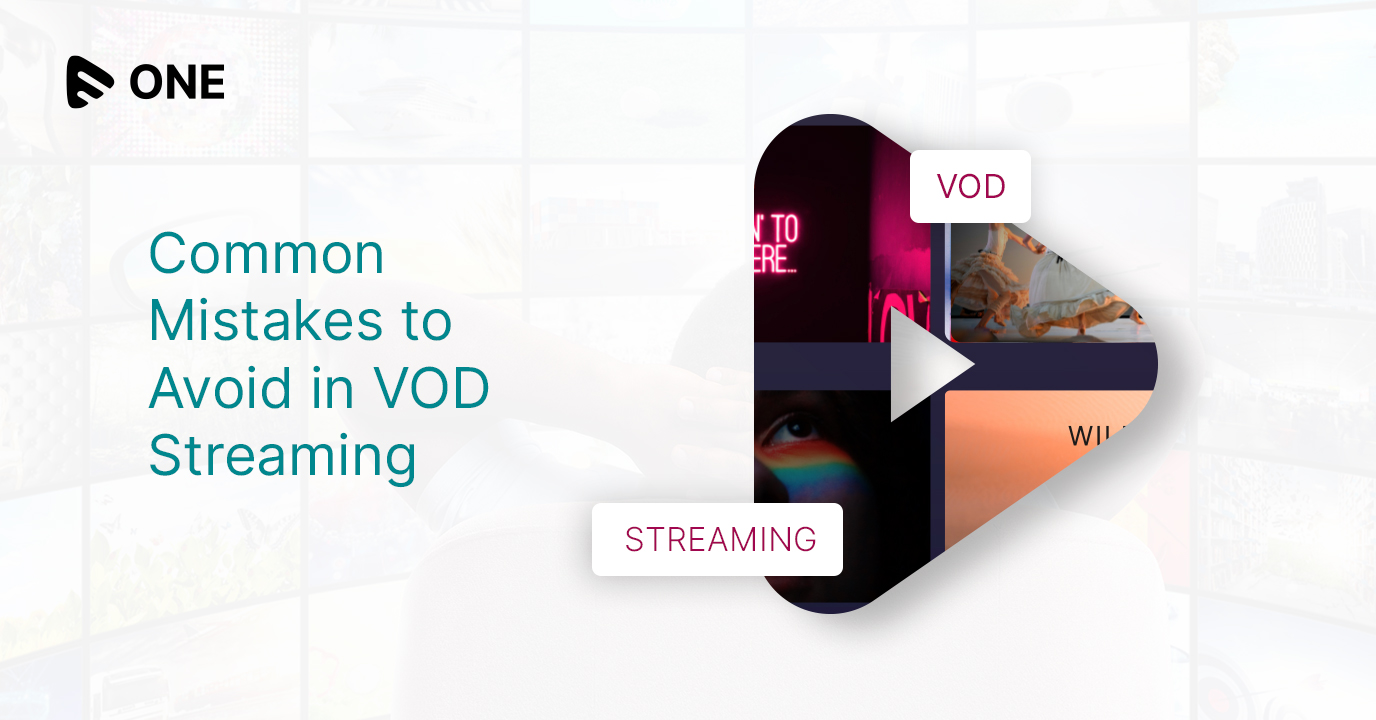



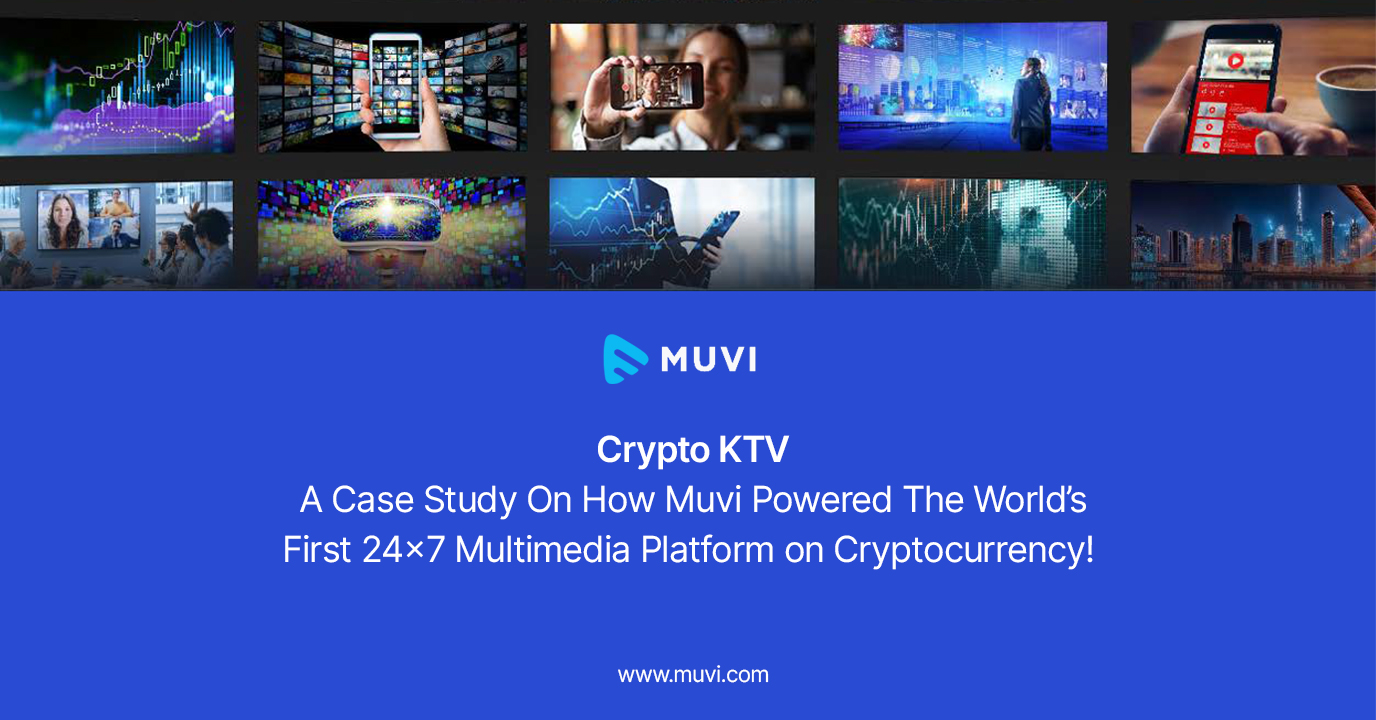
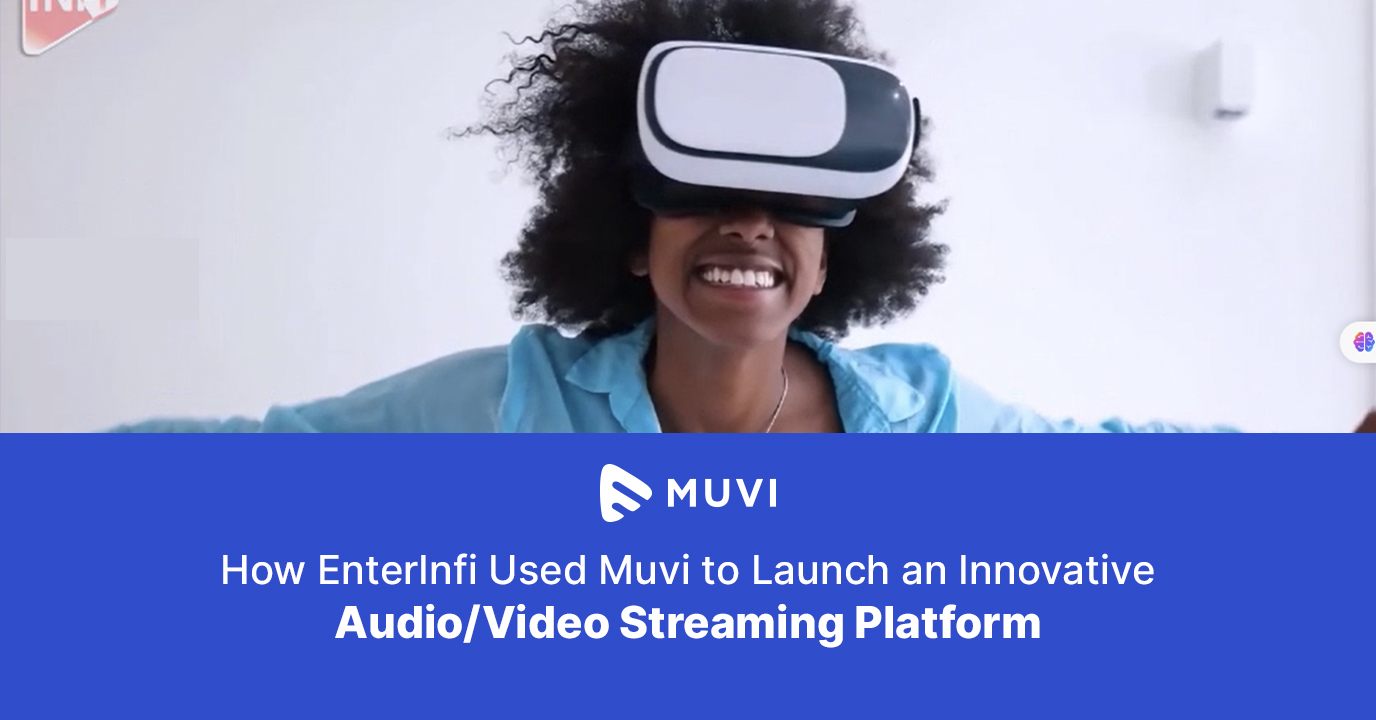





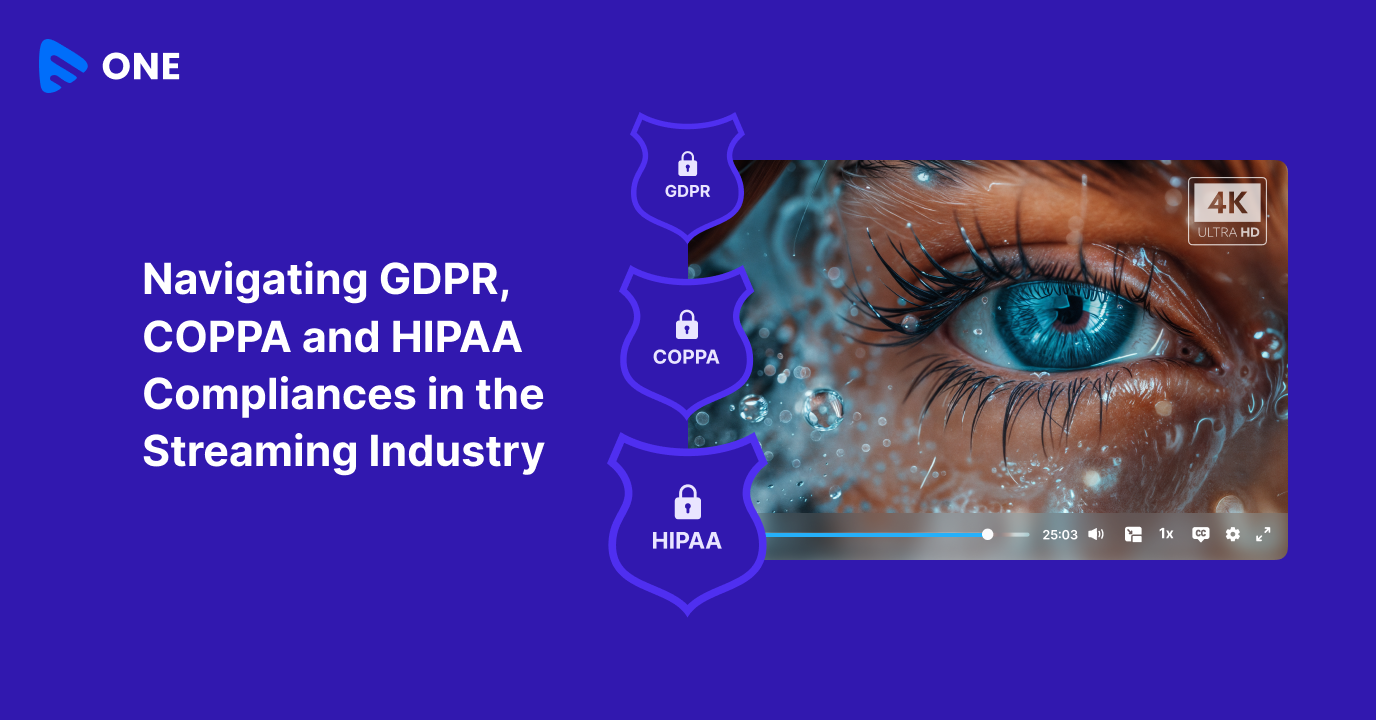
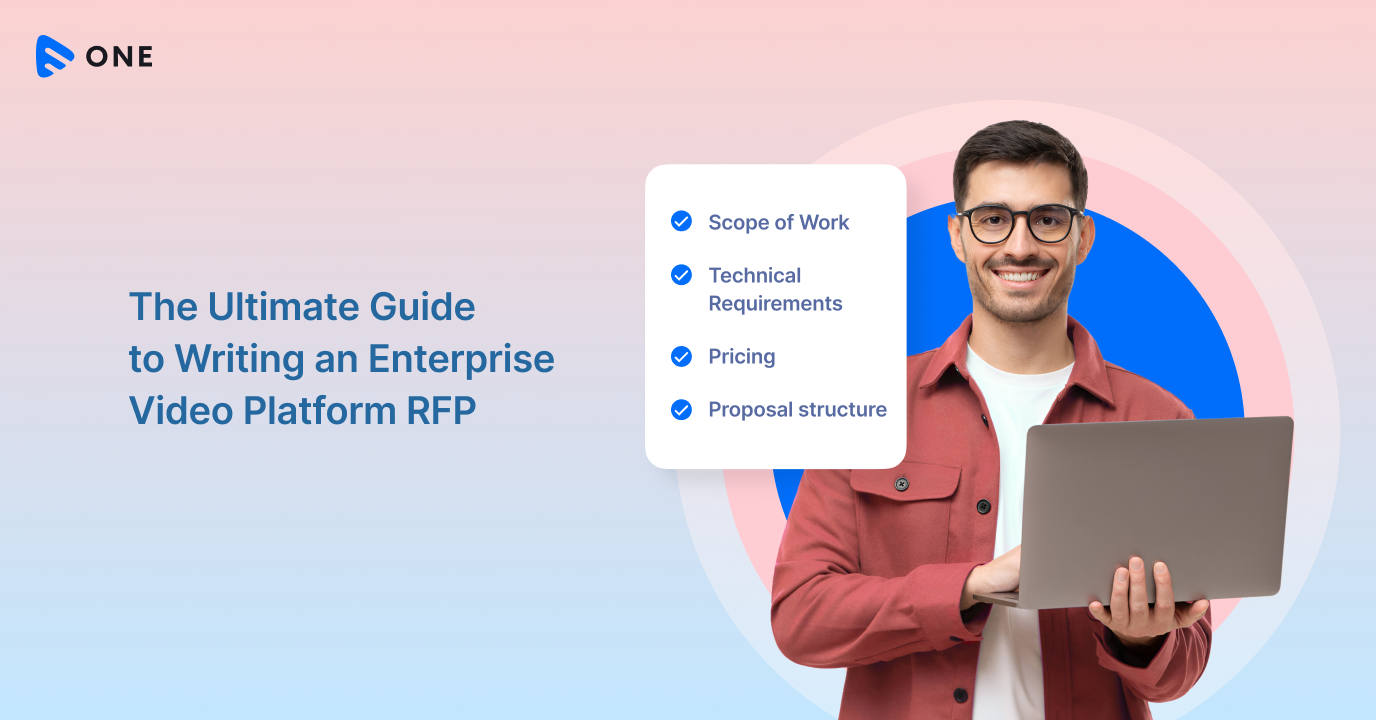
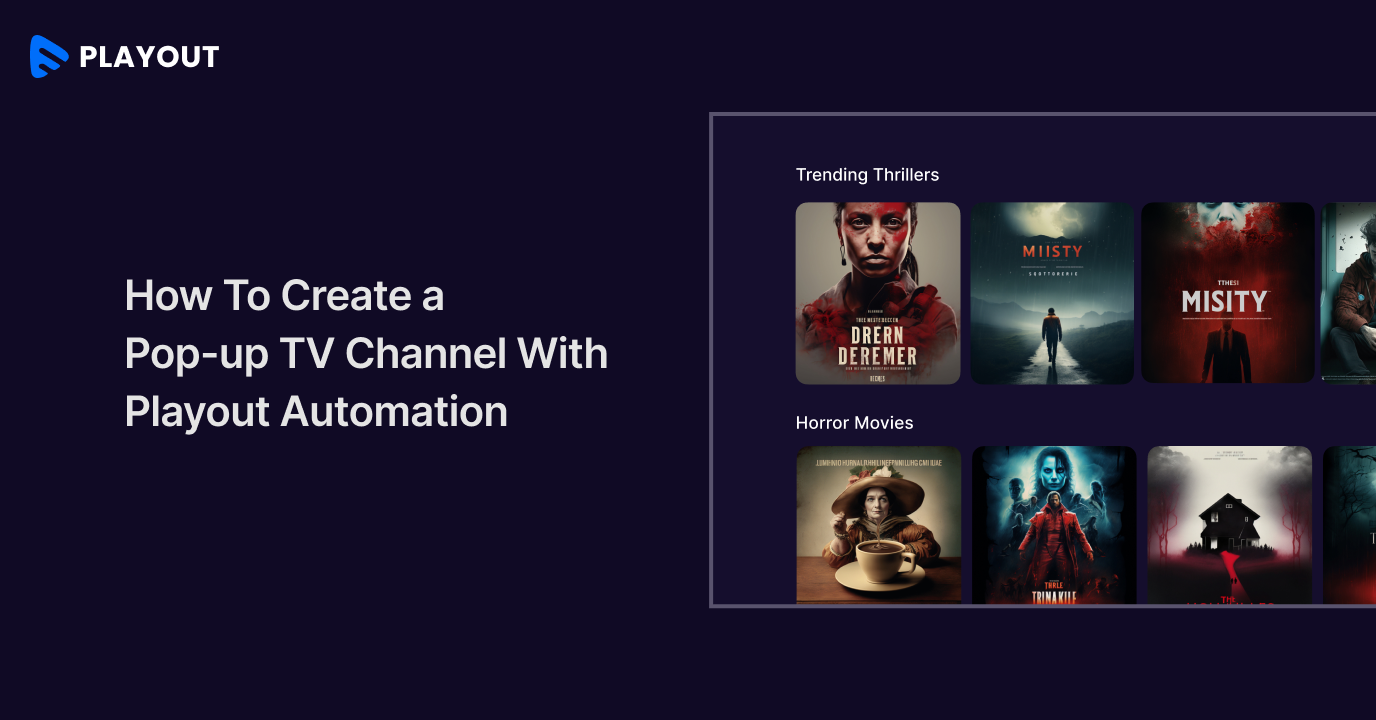



Add your comment